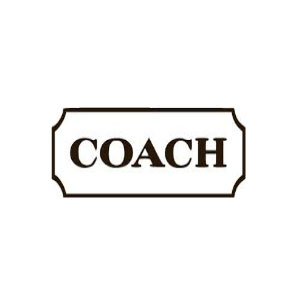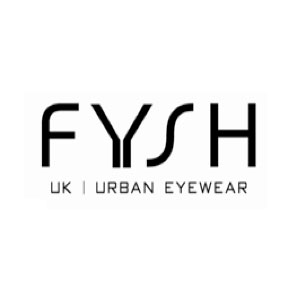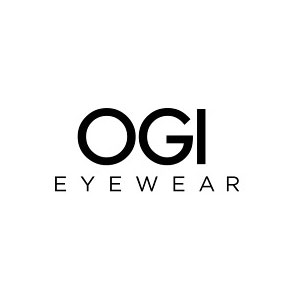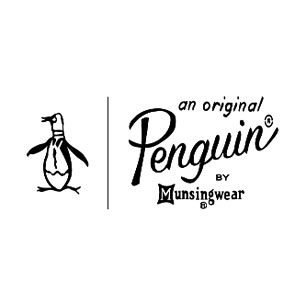Did you know that 1 out of every 4 children suffers from vision problems that interfere with learning? Children with uncorrected vision conditions or eye health problems face many barriers in life, academically, socially, and athletically. High-quality eye care can break down these barriers and help enable your children to reach their highest potential! As a parent, make sure you are giving your children the eye care they need. Presented are guidelines from the American Optometric Association.
Infant's Vision
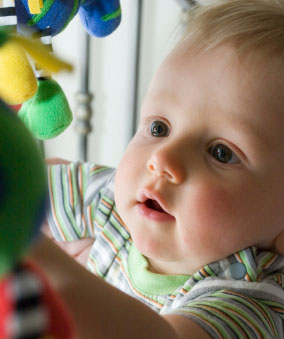 Your baby has a whole lifetime to see and learn. But did you know your baby also has to learn to see? As a parent, there are many things that you can do to help your baby's vision develop.
Your baby has a whole lifetime to see and learn. But did you know your baby also has to learn to see? As a parent, there are many things that you can do to help your baby's vision develop.
When your baby is about six months, you should take him to your doctor of optometry for his first thorough eye examination. Things that we will test for include excessive or unequal amounts of nearsightedness, farsightedness, astigmatism, lack of eye movement ability, as well as other eye health problems. These problems are not common, but it is important to identify children who have them at this stage. Vision development and eye health problems can be more easily corrected if treatment is begun early.
During the first 4 months
Your baby should begin to follow moving objects with the eyes and reach for things, first by chance and later more accurately, as hand-eye coordination and depth perception begin to develop. To help, use a nightlight or other dim lamp in your baby's room; change the crib's position frequently and your child's position in it; keep reach-and-touch toys within your baby's focus, about eight to twelve inches; talk to your baby as you walk around the room; alternate right and left sides with each feeding; and hang a mobile above and outside the crib.
From 4-8 months
Your baby should begin to turn from side to side and use his or her arms and legs. Eye movement and eye/body coordination skills should develop further and both eyes should focus equally. Enable your baby to explore different shapes and textures with his or her fingers; give your baby the freedom to crawl and explore; hang objects across the crib; and play "patty cake" and "peek-a-boo" with your baby.
From 8-12 months
Your baby should be mobile now, crawling and pulling himself or herself up. He or she will begin to use both eyes together and judge distances and grasp and throw objects with greater precision. To support development don't encourage early walking - crawling is important in developing eye-hand-foot-body coordination; give your baby stacking and take-apart toys; and provide objects your baby can touch, hold and see at the same time.
From 1-2 years
Your child's eye-hand coordination and depth perception will continue to develop and he or she will begin to understand abstract terms. Things you can do are encourage walking; provide building blocks, simple puzzles and balls; and provide opportunities to climb and explore indoors and out. There are many other affectionate and loving ways in which you can aid your baby's vision development. Use your creativity and imagination. Ask your doctor of optometry to suggest other specific activities.
Pre-School Vision
During infant and toddler years, your child has been developing many vision skills. In the preschool years, this process continues, as your child develops visually guided eye-hand-body coordination, fine motor skills, and the visual motor skills necessary to learn to read.
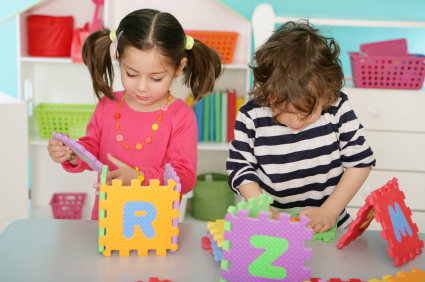
As a parent, you should watch for signs that may indicate a vision development problem, including:
- a short attention span for the child's age
- difficulty with eye-hand-body coordination in ball play and bike riding
- avoidance of coloring and puzzles and other detailed activities
There are everyday things that you can do at home to help your preschooler's vision develop, as it should. These activities include
- reading aloud to your child and letting him or her see what you are reading
- providing a chalkboard, finger paints and different shaped blocks and showing your child how to use them in imaginative play
- providing safe opportunities to use playground equipment like a jungle gym and balance beam
- allowing time for interacting with other children and for playing independently.
By age 3
Your child should have a thorough optometric eye examination to make sure your preschooler's vision is developing properly and there is no evidence of eye disease. If needed, your doctor can prescribe treatment including glasses and/or vision therapy to correct a vision development problem.
Here are several tips to make your child's optometric examination a positive experience:
- Make an appointment early in the day
- Allow about one hour
- Talk about the examination in advance and encourage your child's questions
- Explain the examination in your child's terms, comparing the E chart to puzzle and the instruments to tiny flashlights and a kaleidoscope
Unless recommended otherwise, your child's next eye examination should be at age five. By comparing test results of the two examinations, your optometrist can tell how well your child's vision is developing for the next major step. . .into the school year.
School-Age Vision
A good education for your child means good schools, good teachers and good vision. Your child's eyes are constantly in use in the classroom and at play. So when his or her vision is not functioning properly, learning and participation in recreational activities will suffer. The basic vision skills needed for school use are:
- Near Vision: The ability to see clearly and comfortably at 10-13 inches.
- Distance Vision: The ability to see clearly and comfortably beyond arms reach.
- Binocular coordination: The ability to use both eyes together.
- Eye movement skills: The ability to aim the eyes accurately, move them smoothly across a page and shift them quickly and accurately from one object to another.
- Focusing skills: The ability to keep both eyes accurately focused at the proper distance to see clearly and the change focus quickly.
- Peripheral awareness: The ability to be aware of things located to the side while looking straight ahead.
- Eye/hand coordination: The ability to use the eyes and hands together.
If any of these or other vision skills is lacking or does not functions properly, your child will have to work harder. This can lead to headaches, fatigue and other eyestrain problems. As a parent, be alert for symptoms that may indicate your child has a vision or  visual processing problem. Be sure to tell your optometrist if you child frequently:
visual processing problem. Be sure to tell your optometrist if you child frequently:
- Loses their place while reading
- Avoids close work
- Holds reading material closer than normal
- Tends to rub their eyes
- Has headaches
- Turns or tilts head to use one eye only
- Makes frequent reversals when reading or writing
- Uses finger to maintain place when reading
- Omits or confuses small words when reading
- Consistently performs below potential
Since vision changes can occur without you or your child noticing them, your child should visit the optometrist at least every two years, or more frequently, if specific problems or risk factors exist. If needed, the doctor can prescribe treatment including eyeglasses, contact lenses or vision therapy. Remember, a school vision or pediatrician's screening is not a substitute for a thorough eye examination.
Protective Eyewear
Please don't overlook the importance of safety eyewear when playing sports. Each year, hundreds of men, women, and children are injured when playing sports. To help prevent sports eye injuries, athletes should use protective athletic eyewear whether or not prescription eyewear is needed. One choice is a sports frame with prescription or non-prescription polycarbonate lenses is another choice. Baseball or softball players who are hit in or near the eye, or suffer a blow to the head, should seek immediate care at a hospital emergency room or from an eye care professional.
Children & Contact Lenses
The important thing for parents and their children who wear contact lenses to remember is that contacts are prescribed medical devices. Contact lenses are not a cosmetic accessory. While the wearer may be happy about his or her new look, it's extremely important that the lenses be properly cleaned and worn according to the instruction of the optometrist.






